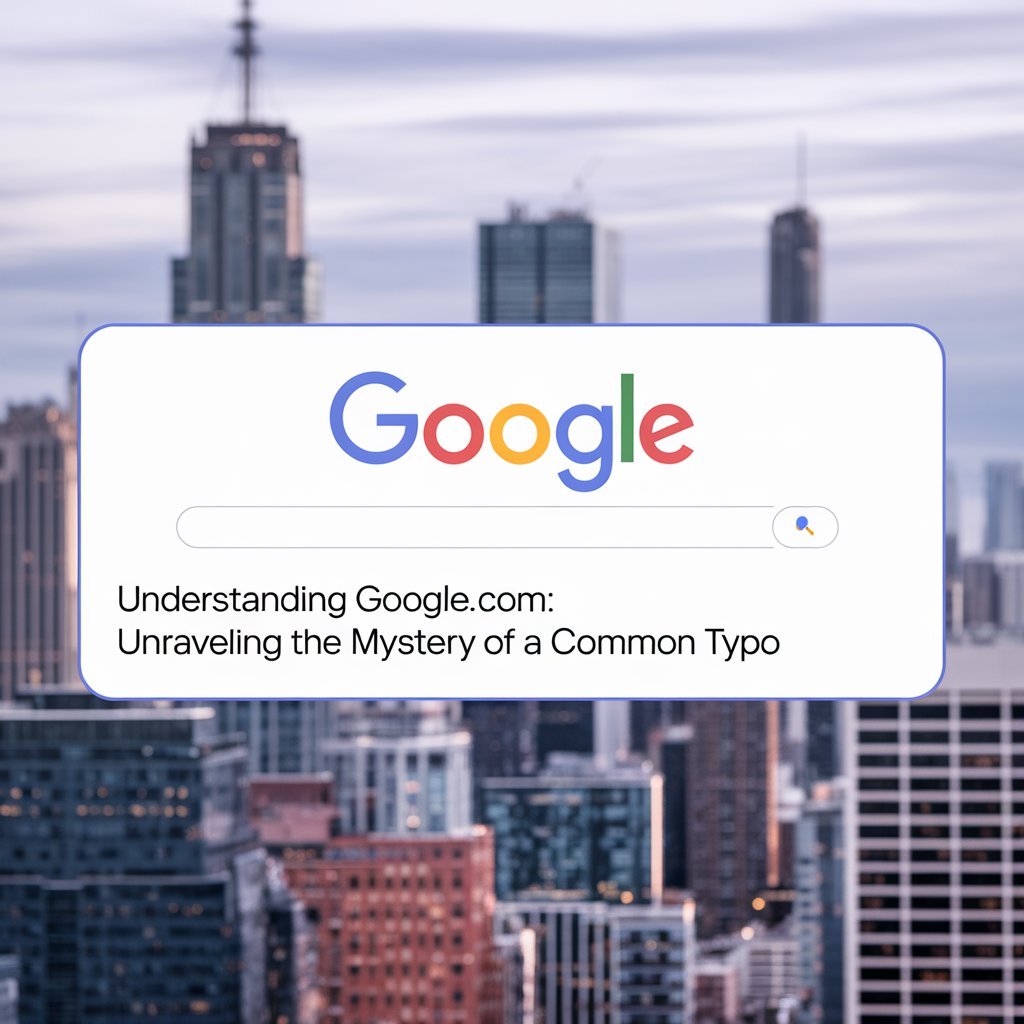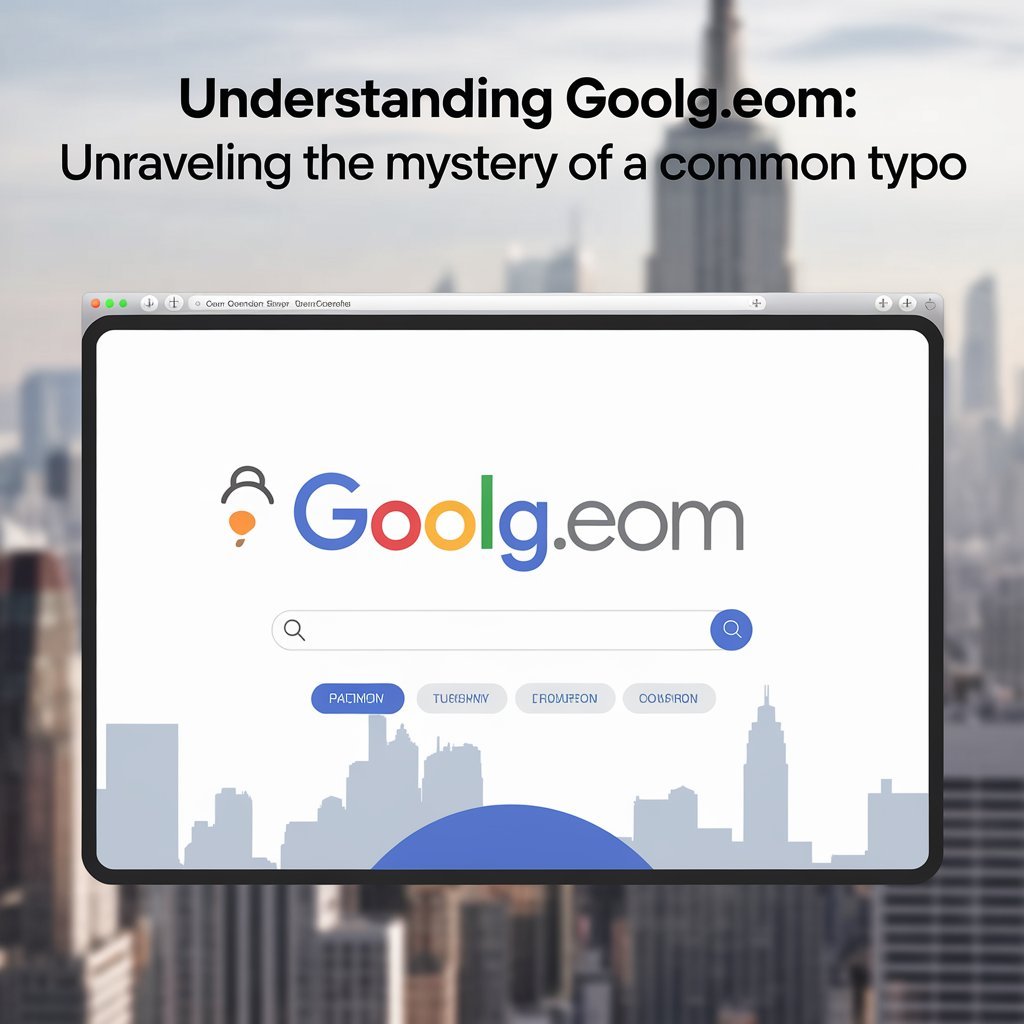Introduction to Goolg.eom
Goolg.eom is an innovative and simplified term that resembles the iconic search engine Google.com. It highlights how small typing errors or “typos” can lead us to different variations of popular websites or services. Goolg.eom is often discussed in the context of understanding internet habits, user errors, and even cybersecurity issues, as it explores the potential risks and learning opportunities associated with these typos. This typo showcases the importance of precision in digital searches, while also reflecting the complexities of navigating the internet safely and effectively.
Table of Contents
What is Goolg.eom?
The term “Goolg.eom” might appear at first to be a typo or a random mix of letters. However, it closely resembles “Google.com,” one of the world’s most recognized search engines, and may draw curiosity as a hypothetical or even strategic term that echoes Google’s well-known structure. Google.com offers a vast range of services, from search functionality and email to cloud storage and more, and its correct spelling is crucial. But if “Goolg.eom” were an intentional term, what might it imply, and what should users consider when encountering it? Let’s explore.
- The Importance of Correct Spelling
Accurate spelling is key, especially when accessing popular sites like Google.com. Mistyping Google as “Goolg.eom” could redirect users to unintended sites, broken links, or even potential security risks. Using the correct URL is essential not only for finding the right resources but also for ensuring online security. If “Goolg.eom” were a deliberate domain name, the resemblance could confuse users, highlighting the need for precision in online navigation.
- Understanding Domain Names and Their Impact
Domain names are integral to website identity, helping users recognize a brand and access it easily. A term like “Goolg.eom” could cause confusion as it resembles a well-known site, Google.com. It may unintentionally mislead users and even risk legal complications for the website owner. Choosing a domain that is distinct and easily identifiable promotes trust and minimizes the risk of user misdirection.
- SEO and Similar Domain Names
SEO, or search engine optimization, is a critical component of any online presence. A domain like “Goolg.eom” might try to capitalize on search similarities to Google.com. However, creating an online brand by mimicking an established domain name often leads to challenges, such as legal issues and poor long-term SEO performance. For sustainable SEO, it’s better to use original, keyword-rich domain names that clearly represent your brand and avoid confusion with major sites.
- Security Concerns with Domain Name Similarities
Encountering “Goolg.eom” or similarly misleading URLs should prompt caution. Phishing websites frequently use nearly identical names to well-known sites to trick users into sharing sensitive information. It’s crucial to verify that any unfamiliar URL is safe before sharing personal or financial information, as some sites can exploit minor spelling differences for phishing.
- Brand Consistency and User Trust
For anyone building an online brand, maintaining a unique and consistent brand identity is essential. A domain like “Goolg.eom” may cause brand confusion and impact trust among users. Selecting a unique, memorable domain name establishes a clear, recognizable brand and fosters long-term credibility with users.
- Domain Alternatives and Best Practices
When choosing a domain name that’s memorable yet distinct, consider the following:
- Be Creative: Try to develop a name that reflects your brand’s mission and identity.
- Keep It Simple: Opt for a name that is easy to spell, say, and remember.
- Check for Availability: Confirm that the domain is unique and doesn’t resemble any well-known brand.
- Enhance SEO: Include relevant keywords that accurately represent your brand’s niche.

The Enigma of “goolg.eom”
At first glance, “goolg.eom” may seem like a simple typo—a misstep when aiming for “google.com.” However, these kinds of misspellings often turn into popular search terms because of frequent typing errors by users. This phenomenon, known as “typosquatting,” involves registering domains that resemble well-known websites, sometimes with deceptive or even malicious intent. Understanding typosquatting sheds light on the potential risks and value of domains like “goolg.eom.”
Why Are People Searching for “goolg.eom”?
Why would anyone search for “goolg.eom”? There are several reasons:
- Curiosity: Many users are naturally curious, especially when they encounter unfamiliar terms in search suggestions. This curiosity can lead them to wonder what “goolg.eom” is and why it appears as a search option.
- Typos and Autocorrect: Misspelling “google.com” as “goolg.eom” can happen accidentally. Search engines often prompt popular typos, which can drive further interest in the misspelled term.
- Cybersquatting and Scams: Some users have encountered websites posing as Google but actually leading to scams. Searching for “goolg.eom” may help users learn more about these suspicious sites.
Understanding Typosquatting and Its Risks
Typosquatting involves registering domain names similar to established websites, often hoping users will visit them by mistake. This tactic can be harmful when used for phishing scams, malware distribution, or other cyber threats. Not every typo-squatted domain is dangerous—some are simply parked by domain investors or remain unused. However, “goolg.eom” could potentially fall into any category, so users should be cautious when visiting similar URLs.
SEO Strategies for “goolg.eom”
From an SEO perspective, ranking content around “goolg.eom” requires strategic planning. While the keyword appears niche, its association with Google brings notable attention. For those aiming to optimize for “goolg.eom,” the focus should be on delivering high-quality, informative content that helps readers understand typosquatting risks and how to stay safe online. This approach not only improves keyword relevance but also provides valuable information for readers.
The Role of Typo Errors in Cybersecurity
Simple misspellings like “goolg.eom” can have serious cybersecurity implications. Cybercriminals often leverage “typosquatting” or “URL hijacking” by registering domains that mimic popular sites, hoping users will accidentally land on them. These fake sites can prompt users to enter personal information, download harmful software, or install malware. This underscores the importance of verifying website URLs before providing any data.
Crafting Content Around Unique Keywords
Creating content for unusual keywords such as “goolg.eom” requires a balance of creativity and user focus. The goal is to offer insightful and relevant information that keeps readers engaged. For instance, addressing the keyword within a broader topic, like online security or digital marketing, can attract readers interested in internet safety while still being relevant to “goolg.eom.”
Monitoring Keyword Performance for “goolg.eom”
Once content is live, tracking the keyword “goolg.eom” is essential to refine the strategy over time. This includes monitoring its search engine ranking, analyzing traffic data, and adjusting the content approach as necessary. Due to its niche nature, the performance of keywords like “goolg.eom” may fluctuate, so ongoing optimization is key to sustaining visibility.

Frequently Asked Questions about Goolg.eom
- What is Goolg.eom? Goolg.eom, commonly understood as Google.com, is a powerful search engine that helps users find information online. With it, you can search for various types of content, including web pages, images, videos, and news. Goolg.eom also connects users to a wide range of services like Gmail, Google Maps, and Google Drive.
- How does the search function on Goolg.eom work? Goolg.eom uses complex algorithms to deliver the most relevant search results based on keywords, website quality, and user experience. By analyzing these factors, Goolg.eom aims to provide accurate and useful search outcomes.
- Is Goolg.eom free to use? Yes, Goolg.eom’s search engine is free, along with many other services, including Gmail, Google Drive, and Google Photos. Some premium features, such as additional storage or specialized content, may require a subscription or fee.
- How do I search for specific information on Goolg.eom?
- Basic Search: Type relevant keywords into the search bar and press Enter.
- Advanced Search: For more precise results, enclose phrases in quotation marks (e.g., “climate change effects”) or use search operators like “site:” to filter results from a specific website (e.g., site
.com).
- How can I improve my search results on Goolg.eom? Use targeted keywords and advanced search filters to narrow down your search results. Goolg.eom also offers additional tools to sort by time, location, or content type (such as images, news articles, or videos).
- What is a Goolg.eom account, and why is it beneficial? Creating an account on Goolg.eom (a Google Account) provides access to personalized services such as Gmail, YouTube, and Google Drive. With an account, users also receive tailored search results and personalized recommendations based on their preferences.
Conclusion
In summary, understanding Goolg.eom (a misspelling of Google.com) underscores the significance of using accurate domain names to ensure successful online navigation. Whether for personal use or business purposes, adhering to domain best practices and focusing on clarity can make a substantial difference in building a solid online presence. Prioritizing originality and precision can help enhance your digital reach and prevent user confusion, ultimately strengthening your SEO efforts on Goolg.eom.
For any kind of updates please visit theallenwrench



